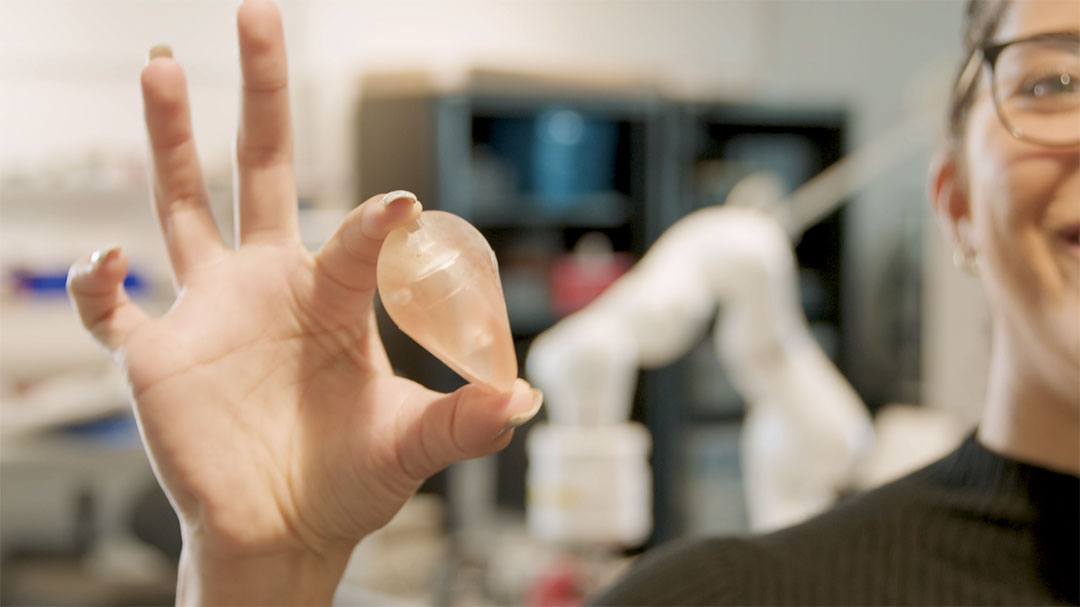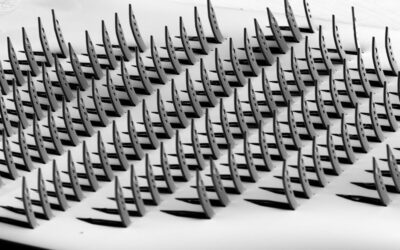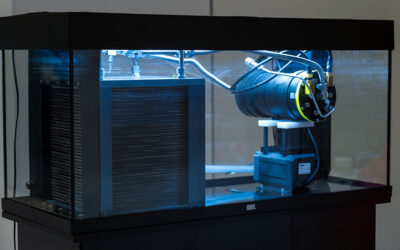Engineers from the University of Leeds have developed a magnetically controlled robot that can move through the gastrointestinal tract and create a detailed reconstruction for clinicians diagnosing colorectal cancer.
The key innovation lies in the shape of the robot, which grants it “a previously impossible” range of motion when navigating the gut.
“We’ve addressed a common limitation with magnetically manipulated robots, which can typically rotate in only two dimensions using magnetic fields,” said Nikita Greenidge, postgraduate researcher at the University of Leeds. “By [using] a unique 3D shape called the oloid, we enabled rotation in a third dimension without the need for additional motors or actuators.”
The oloid shape, formed by two intersecting perpendicular circles, enables the robot to move in smooth sweeping motions, giving it more maneuverability over other shapes commonly used in medical applications like spheres or cylinders.
Greenidge and colleagues integrated a high-resolution ultrasound probe in the device, which allowed them to create 3D tissue scans deep inside the gut. This enabled them to perform “virtual biopsies,” a non-invasive and much faster alternative to traditional biopsies, which require sending a tissue sample to a lab and waiting one to three weeks to get results back.
“This advancement is crucial for the early detection of diseases like colorectal cancer,” said Greenidge. “Medical professionals would now be able to visualize tissue in real-time, enabling immediate diagnoses and simultaneous removal of suspicious tissue.”
Building medical robots
Greenidge, who is currently completing her PhD at the Science and Technologies Of Robotics in Medicine (STORM) Lab at the University of Leeds, was inspired to work on this research project because of its potential to improve patient care and reduce the pressure on medical professionals.
“As engineers, we have the opportunity to solve real-world problems, and the medical field offers an incredibly rewarding context to see the direct impact of our work,” she added.
Her oloid robot design is part of a robotic system developed at the STORM Lab over the last decade with the goal of modernizing colonoscopies to enable the early diagnosis of conditions like colorectal cancer. The system relies on a robotic arm equipped with a large magnet to control the movement of magnetic robots inside the gut.
“This approach offers a painless alternative for patients and simplifies the procedure for medical professionals,” said Greenidge. “The design also addresses gender disparities among colonoscopists, as traditional scopes were designed for larger male hands.”
Ultrasound is a safe and inexpensive technique that can be used to create 3D reconstructions known as virtual biopsies, from which clinicians can then select images similar to those obtained in standard tissue biopsies to make a diagnosis. Despite the promise of virtual biopsies, the movement limitations of previous robot designs had so far made it impossible to make 3D scans of the gastrointestinal tract.
“For the first time, this research enables us to reconstruct a 3D ultrasound image taken from a probe deep inside the gut — something that has never been done before,” said Pietro Valdastri, director of the STORM Lab.
This technology could allow clinicians to focus on making decisions about diagnosis and treatment while the robotic system handles routine tasks. In addition, the robotic system could significantly reduce costs and the training time required to perform endoscopy procedures.
The researchers successfully tested the robot in an artificial colon as well as in pigs, which have a gastrointestinal tract with a similar anatomy to humans. Next year, they plan to start a clinical trial to validate these results in humans.
Atlas Endoscopy, a company founded by Valdastri, is currently in the process of applying for FDA approval for the robotics system, which would enable its use in routine clinical practice.
Reference: Nikita J. Greenidge et al., Harnessing the oloid shape in magnetically driven robots to enable high-resolution ultrasound imaging, Science Robotics (2025). DOI: 10.1126/scirobotics.adq4198

















